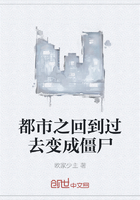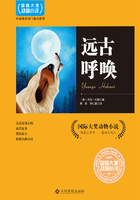Our complicity in world making is a source of awesome and sometimes painful responsibility-and a source of profound hope for change. It is the ground of our common call to leadership, the truth that makes leaders of us all.
-Parker J. Palmer
Most people would agree that leadership is something we need more of, but there's little agreement about exactly what good leadership means, except that we don't want more of the traditionally hierarchical and authoritarian style. Search the Internet with the keywords good leadership and you'll find countless books and articles with lists of the top skills and traits of a good leader. You'll also find all kinds of programs and coaches and organizations claiming to offer the secrets to leading well, as if there were a shortcut.
Most of us know "good" leadership when we see it or experience it; we put labels on it, like authentic, transformational, trustworthy, successful, courageous. Look further. Good leadership is about making good decisions by balancing inevitable tensions and knowing when to take risks. Leadership is keeping your values in sight regardless of the pressures around you, and staying calm in the storms that arise. Leadership is listening well and inviting opinions and answers from others. Leadership is inspiring others with your vision, influencing them with the power of your presence. Leadership encourages others to step into their leadership, too.
That's a lot to expect from a leader, yet that's what is required, both for the running of organizations and institutions and for those who aspire to create change in the world despite broad disagreement on precisely what needs to change. Good leaders shape the conversation so that meaningful progress can be made around complex issues.
Leadership can be exhausting, lonely, frustrating, disappointing, ineffective, and downright discouraging. To sustain themselves, leaders need stamina, inner strength, and a supportive community.
So where do you find such resources for good leadership? Lists of traits and skills may tell you what kind of leader to be, but they don't tell you how to get there. At its core, leadership is a daily, ongoing practice, a journey toward becoming your best self and inviting others to do the same. And at the heart of this daily practice is courage. And that's where the Courage Way comes in. It's a guide to leadership and a way of life that names and explores this important resource and shows leaders how to access and draw on courage in all that they do.
The Heart of Leadership
We might sense that courage comes from within, but really, how do we find it or draw on it? To answer this, Parker Palmer and the Center for Courage & Renewal explore the essential questions: What if courage comes from a deep trust in ourselves, a trust rooted in profound self-knowledge? And not just from ego-or mind-based thinking but from the deepest part of ourselves, where we can be true to ourselves and true to others. What if more people made choices based on a mindful, self-aware way of weighing the options, seeing the biggest picture, and consciously considering the feelings and opinions of others, while staying faithful to a much larger vision of purpose and meaning?
In fact, the realization of these "what ifs" can be seen in the history of social movements when the power of the human heart is skillfully evoked and deployed in strategic action that counters the power of positional authority and physical prowess and economic might. If that were not the case, no oppressed minorities would ever have made any social gains. These are movements animated by the only power left to people who have had all the external power taken away from them: the heart to claim their integrity. If the heart weren't so powerful, there would never have been social movements to rectify social injustices. If the heart weren't so powerful in its commitment to meaning and purpose and caring for others, the ongoing need to collaborate, to reach common understandings, and to work out the details, movements would be unable to effect meaningful change.
For over twenty-five years, the Center for Courage & Renewal, its facilitators, its staff, and the thousands of people who have gone through its programs have been exploring these "what-if" questions and have come up not with answers but with a way of living, thinking, relating, and leading that is life giving. The Courage Way is at the center of what it takes to empower people to lead in wholehearted ways, regardless of the scale and scope of their efforts.
Five Key Ingredients of the Courage Way
In the more than 120 interviews I conducted for this book, I found a pattern of five key ingredients in how leaders have learned to cultivate courage. Three powerful main concepts are true self, trust, and community; the two key practices are paradox and reflection. Later chapters will flesh out each idea, but here's a brief overview.
True Self
Our basic premise is that inside of each person is the essential self who continues to grow and yet somehow, deep down, remains constant. Every person has access to this inner source of truth, named in various wisdom traditions as identity and integrity, inner teacher, heart, inner compass, spirit, or soul. Your true self is a source of guidance and strength that helps you find your way through life's complexities and challenges. When you begin to listen to and trust the truest part of yourself, your choices and relationships flow from that trust, begetting more trust.
Trust
Courage takes trust-in ourselves and in each other. Trustworthy relationships create the conditions for people to flourish and for positive change to arise. Relational trust is based on our perceptions of personal regard, professional respect, competence, and integrity in other people. Coming to understand the attitudes, assumptions, and biases that lead to such perceptions of trust entails honest inner work. Our collection of principles and practices is a time-tested approach for facilitating inner work and cultivating relational trust.
Community
Becoming more self-aware and trustworthy requires both individual introspection and a supportive community. We offer a specialized meaning of community as "solitudes alone together" as well as a "community of inquiry." Our practices offer models for how to reflect and interact with each other so that new clarity and courage can emerge.
Being receptive to the very idea of needing other people in community takes courage and yet, in turn, creates resilience. Leaders must know how to invite people into and hold them accountable for cocreating trustworthy space so that they can support each other in service of their work together. Achieving effective collaboration requires genuine trustworthy community.
Paradox
We can learn to practice paradox by recognizing that the polarities that come with being human (life and death, love and loss) are "both-ands" rather than "either-ors." We can learn to let those tensions hold us in ways that stretch our hearts and minds open to new insights and possibilities. With paradox we honor both the voice of the individual and our collective intelligence. We trust both our intellects and the knowledge that comes through our bodies, intuitions, and emotions. Paradox values both speaking and listening. An appreciation of paradox enriches our lives, helping us hold greater complexity. Integrating our inner lives with our work in the world comes from daily practice in holding paradox.
Reflection
Reflection cultivates more ways of knowing and learning that complement your mind and emotions, but draw from a deeper place: your intuition, imagination, and innermost being. Reflection is a practice that can be enriched by the mirroring of trustworthy companions.
When we reflect together, such as by exploring how universal stories of human experience intersect with the personal stories of our lives, it can create relational trust. Guided conversations focused on a poem, a teaching story, a piece of music, or a work of art-drawn from diverse cultures and wisdom traditions-invite us to reflect on the big questions of our lives, allowing each person to explore them in his or her own way. Reflection helps us find the inner ground on which we stand firm, and it helps us find common ground with others.
If we are willing to embrace the challenge of becoming whole, we cannot embrace it all alone-at least, not for long: we need trustworthy relationships to sustain us, tenacious communities of support, if we are to sustain the journey toward an undivided life. Taking an inner journey toward rejoining soul and role requires a rare but real form of community that I call a "circle of trust."
-Parker J. Palmer
Creating a Container for Trust
We spend so many hours of our day and week in the work-place, we need and want it to feed our well-being on many levels: mental, physical, emotional, and spiritual. Trust is a key to well-being. If the idea of creating trustworthy space for yourself and for your colleagues sounds appealing, you may be wondering how you can do that consistently-or how you can sustain it.
The hallmark of the Center for Courage & Renewal's work is its emphasis on the Circle of Trust? approach,[17] the purpose of which is to create and sustain safe space for individuals and the group they are part of. Circle practices have existed for as long as humans have had fires to gather around and language to talk with one another. Contemporary circle practices have developed for personal growth, restorative justice, team building, peacemaking, community building, and so on. Circles of Trust were developed to help participants "reconnect soul and role," to renew their passion for their profession, and as time went on it became clear that our approach also created relational trust among people. Our circles are facilitated using a set of rules called touchstones.
Touchstones are our operating guidelines for holding the meaningful conversations of inner work and trust building. They form strong boundaries for interactions and are designed to disrupt the typical hierarchy and power dynamics often seen in workplace conversations. These touchstones can also be adapted to define how you work together with integrity and trust in an organization, community, or network-inviting the best of each person to show up and contribute.
You'll see touchstones mentioned throughout the book, as leaders describe how the practices came into play in their situation and/or organization. Take a moment to soak in these ideas; find someone to compare notes with about these different ways of relating to yourself and to others.
Each touchstone alone is an admirable idea. You could devote a day to noticing how it shows up in your life or work; you could meditate on each one for a week or a month. The magic and mystery of this collection of practices comes from the chemistry of how they combine to catalyze trust.
Together, these touchstones create a hospitable "container," one that enables people to show up with integrity and authenticity so that they can engage in honest conversation. I use the word container consciously. How do we create containers that hold people-relationships, corporate culture, community-accountable? How do we hold people with regard and respect? For that, good ground rules are needed, and that's what the touchstones are. Here I've included a short version of them to start; we'll explore them in a little more detail in the rest of the chapter.
TOUCHSTONES AT A GLANCE
1. Give and receive welcome.
2. Be present as fully as possible.
3. Extend invitation, not demand.
4. Speak your truth in ways that respect other people's truth.
5. No fixing, saving, advising, or correcting each other.
6. When the going gets rough, turn to wonder.
7. Practice asking open, honest questions.
8. Attend to your own inner teacher.
9. Trust and learn from the silence.
10. Commit to and maintain confidentiality.
11. Know that it's possible for the seeds planted here to keep growing.
At the deepest levels of human life, we do not need techniques. We need insights into ourselves and our world that can help us understand how to learn and grow from our experiences of diversity, tension, and conflict.
-Parker J. Palmer
Touchstones for Creating Trustworthy Space
Touchstones can be grouped into three phases for building trust and thus courage, both within yourself and with others-intention, interaction, and integration.
Intention
The first three touchstones suggest ways to practice welcome, presence, and invitation as you enter into any interaction. Each one calls on your self-awareness and intention. Together they set the tone for relational trust to emerge, like playing middle C to tune a piano or inviting choir voices to come together around a single pitch. These touchstones can define the tonality of your personal leadership and your organizational culture.
Give and Receive Welcome
Extend hospitality, and presume welcome, too. This includes welcome and support for diverse perspectives, opinions, and approaches. Welcome moves us from loneliness toward belonging. When we feel welcome, we are more likely to learn, engage, and contribute to collective efforts.
Be Present as Fully as Possible
Set aside the usual distractions of voicemail, e-mail, things undone from yesterday, things to do tomorrow. Bring all of yourself-your doubts, fears, and failings as well as your convictions, joys, and successes, your listening as well as your speaking-to the work, not just the parts of yourself and your experience that would be obviously relevant to this work.
Practices which demonstrate that you are fully paying attention are a rare gift in these days of multitasking and competing priorities. But being present means more than that. This touchstone gives you a chance to honor the wholeness of life, to acknowledge the complexities inside you and all that you're facing. It's a way of saying, "Despite all that is happening in my life right now, I am committed to being focused on our work at this moment to the best of my ability." And because we're all human, we can relate.
Extend Invitation, Not Demand
In a Circle of Trust, participation in conversation is always by invitation, never by demand. Participation by listening with care is no less a contribution than participation by speaking with care.
Inner work must be invitational because the inner teacher speaks by choice, not on command. We all need times and places where there is the freedom within a purposeful process to learn and grow in our own way, on our own schedule, and at our own level of need.
Some people appreciate the phrase "This is not a share-ordie event," especially those who are more introverted or just plain tired. Interestingly enough, when participation is invitational, people are even more likely to eventually join in. In the workplace, this authentic invitation to participate means a commitment to actively engage one another in the common work and avoid making anyone feel coerced, whether in a conversation or a process.
It seems counterintuitive to consider invitation as a valid practice in the workplace, where people are paid and expected to do their work. Subordinates may resist being asked to step up, preferring directives instead. Followers, by contrast, want to be motivated by a personal and meaningful challenge. They will rise to the occasion of authentic and consistent invitation from a strong and compassionate leader. How might you invite but not insist that others step into their own leadership and potential?
Interaction
The next touchstones are meant to guide interactions during dialogue and large-group conversations. But they are just as applicable to your daily life and how you treat other people at work and at home.
Speak Your Truth in Ways That Respect Other People's Truth
This touchstone asks you to use "I" statements and to respect that views of reality may differ. It is applicable in friendships, personal and mentoring relationships, and other situations where sharing your genuine story is what matters most. When you're getting to know people, it's vital to share stories across lines of difference, not to debate who's right or wrong, and not to cast blame or shame.
Imagine a workplace where you are invited to speak your truth and to share your knowledge, gifts, and expertise, trusting that your voice will be heard and your contribution respected. Deliberations about direction, priorities, approaches, money, leadership, and power do elicit many facets of truth from members of the group. It is therefore important that people be able to speak their perspective and truth and be responsible in communicating it to others.
In the workplace, especially when solving problems, it's healthy and necessary to interpret and debate what others say. Speaking with "I" statements can improve discussion and decision-making, encourage respectful listening, and safeguard against aspects of social exchange that make a person feel unsafe.
No Fixing, Saving, Advising, or Correcting Each Other
This touchstone goes back to the premise that our true self knows best. Leaders (and elders, bosses, spouses, siblings, and friends) often feel expected to have all the answers. This is one of the hardest guidelines to follow no matter what the role or job title because we are conditioned to believe that we are being helpful when we offer each other advice.
But aren't leaders supposed to fix, save, advise, and correct their team, peers, and even their bosses? This touchstone doesn't mean avoiding giving advice when it is definitely needed. Good leaders point their team in a direction where they can find answers, and also instill the belief that team members have the gifts and capacity to make good decisions the leaders will support.
This touchstone reframes our response from counsel to curiosity, from invasiveness to inquiry, especially when combined with the other touchstones. As countercultural as this touchstone is, it is also the one that leaders cited as among the most valuable, along with the next one, turning to wonder.
When the Going Gets Rough, Turn to Wonder
If you feel judgmental or defensive in the midst of an interaction, pause long enough to ask yourself, I wonder what brought her to this belief? I wonder what he's feeling right now? I wonder what my reaction teaches me about myself? This practice allows you to set aside judgment to listen to others-and to yourself-with compassionate inquiry.
Some leaders say they prefer to ponder their own reaction first, which is vital to cultivating deeper self-awareness and owning their reactions. In the heat of the moment during a discussion, however, it might serve the conversation to simply turn to wonder about the other person's reaction so that you intentionally set aside judgment and stay present enough to listen.
Many participants tell us that turning to wonder is one of the touchstones they use most in their life. It's a way of offering grace to another, of allowing for moments when they're not at their best. By wondering what's going on inside someone else, you can be generous with another. You can give leeway when a casual remark stings like an insult, even if delivered without harmful intention or not even directed at you. And it encourages a sense of reciprocity when you can expect this same treatment from your colleagues on your own hard days.
In the workplace, it is important to have ways to voice disagreement, respectfully talk about the differences, and move toward resolution. Trust among members is never more important than during times of confusion or disagreement. Sometimes leaders must hold that wonder until there is an appropriate time, and safe space, to follow up on an issue. There's a time and a place to confront other people, though confront is not the right word. You can choose to approach others as a diplomat. This leads to the next touchstone: asking open, honest questions.
Practice Asking Open, Honest Questions
Instead of offering advice or holding on to wonder so long that it becomes unproductive, you can seek understanding. Open, honest questions are ones you cannot possibly know the answer to in advance; they are meant to elicit insights, to help people access their own resourcefulness.
Practical uses of open, honest questions range from a different way to structure performance evaluations to deep discernment about life transitions. There is an art to asking questions that are not leading or directive, and we'll go into this practice in detail in chapter 8.
Attend to Your Own Inner Teacher
As you listen to and interact with others, pay close attention to your own reactions and responses. Growing more socially and emotionally self-aware is the essence of building trust in yourself. Attending to your inner teacher is a form of mindfulness that includes listening in to your body and gut (through which your true self sends signals), and also checking in with your wisest companion at your core. When such reflective practice becomes second nature-and is used to monitor your reactions throughout a stressful day-you become more resilient, responsive, and real.
Trust and Learn from the Silence
Silence, or stillness, is a gift in our noisy world and a way of knowing in itself. It is all too rare in organizational settings where team or group members may compete for airtime and visibility, so this practice may seem hard to incorporate into such settings. Yet silence is vital to allowing each person's inner wisdom to emerge and all voices to be heard and valued. Silence in this context is not the same thing as being silenced, an experience of oppressed and marginalized people or in situations where power dynamics come into play.
It takes practice to be comfortable with more than a few seconds of generative silence before people begin to fidget or speak up. Silence has its own momentum that can lead to breakthrough insights if held long enough. Interrupting silence too soon may shut down valuable comments that will otherwise never emerge.
Silence and spaciousness can add value to workplace processes. Silence informs the best steps to take next, brings focus back to the group, and increases people's patience with the process and with different paces of learning and responding. After someone has spoken, take time to reflect without immediately filling the space with words. Having a spacious agenda and providing space through breaks or by moving to another topic when needed allow participants to "sit with" questions or issues until there is a new understanding. Also helpful is to have methods in place to hold the questions and return to them at regular intervals, something as simple as a "parking lot" list on a flipchart or whiteboard.
Integration
The final two touchstones are the takeaways, the commitments to protecting trustworthy space and integrating your insights long after the day's conversation has come to a close.
Commit to and Maintain Confidentiality
People are more likely to trust each other and their leaders when they know that their words and stories will remain with those with whom they choose to share them, and will never be passed on to others without permission.
People who practice confidentiality can be trusted. Leaders and colleagues who gossip cannot. Of course, there are situations (and professions) where people have a legal obligation to report that someone is being harmed or is in danger. When something has been shared in confidence, we must be able to discern when to bring an issue to light, or encourage others to speak up for themselves.
More than one leader we interviewed mentioned the value of experiencing fierce attention to confidentiality, not just for others but for themselves. Many leaders feel isolated and unable to speak frankly about doubts and emotions, except in therapeutic situations or perhaps with a trusted spouse or close friend. The touchstone of confidentiality, when honored among colleagues or in leadership cohorts, gives leaders a way to build trust and experience trust. This can then translate into knowing whom they can trust when it's time to collaborate.
Know That It's Possible for the Seeds Planted Here to Keep Growing
Ponder this one as a metaphor. This touchstone can mean trusting in the seasons of your career: there is often a time lag in deriving meaning from the most complex, challenging events, especially if you didn't seem to achieve success at the time. At the scale of long-term change, this touchstone is a reminder that your work unfolds over time and that you may not always see immediate results of your efforts. You might also apply it to the idea of vocation, when you know you've answered your calling to your fullest extent and you realize it's time to move on.
You can also apply this touchstone to moments of renewal, snatched snippets of sunlight when you can breathe in and out, perhaps listen to music, walk your dog, read a poem. Your busy life as a leader may mean that those moments are brief or too few, but if you drop into them with your full presence, you can trust that the seed of renewal you've planted will sustain you as you go on with your day.
One leader said she interprets this touchstone as "believing that when we move from this particular strategic planning process, we can leave this particular time and place more revived and renewed than when we first came into this conversation."
Another leader told me that it's simply the first four words of this touchstone that he finds the most aspirational: know that it's possible. He said, "Even in a world where national dialogue is increasingly uncivil and common ground seems more rare, I know that we are not emotionally or morally far from our shared values. I know that what is possible first presents itself in the heart, and then makes its way to the head. I know and perhaps fear that with each passing day, what is possible-at least from an ecological standpoint-might become less and less probable. And, of course, I know we stand in many tragic gaps in life, and recognize that our vocation lies somewhere between what is real and what can be."
No longer seen as having sole responsibility for finding a solution, leaders must engage others in understanding problems. It means facilitating-or holding space for-the distress that comes with asking tough questions, appreciating the scope of the problem, reconsidering their current roles, and challenging comfortable norms.
-Deborah Helsing, Annie Howell, Robert Kegan, and Lisa Lahey
Holding Space
A leader's job is to hold space for the vision and purpose, to hold space for others to do their good work. Effective leaders hold space for conversation, especially on difficult issues with many points of view, and invite others to show up with their full abilities, ideas, and energy. It takes tenacity to hold the space in which people can discover their inner resources.
As we learned from Monica Worline's research cited in the introduction, courage exists in the spaces between us. When we craft spaces with intentionality in order to evoke creativity in the people who come into those spaces, it's a double helping of creativity. That's because people find courage to bring forth something new from within themselves and from between each other. As the poet Wendell Barry reminds us, "What we need is here."[18]
What's within us as individuals is foundational and critical. But when clarity and wisdom arise from the conversations between us, something happens: a shared and larger truth arises from the center of the circle. And from there, courage is born from the trust that's created. We find integrity and the courage to act on it.
Imagine the eleven touchstones arranged in a circle so that you can sense the container they create for meaningful conversation-and creativity-that can arise from within. Together the touchstones help leaders hold space, but not as dogma or rigid rules. More than the precise words used to describe them, it's the intention beneath each touchstone that matters.
Finding Your Own Way
These touchstones can do more than serve as guidelines for group process. They can go with you into your day, accessible and effective for helping you respond as a leader with more presence in moments of pressure, challenge, and tension.
For your personal leadership, you might think of these ideas as a cairn of stones you can stack on your desk to remind you of how you want to behave during the day-to-day grind. Just like a cairn, the touchstones fit together in a fine balance, but you must find your own way to arrange them.
Rest assured, the leaders you'll meet in this book don't always remember or refer to the touchstones by name but they've come to embody the concepts. It's one thing to know in your head what to do as a leader, another to cultivate these qualities inside your heart. There is no quick fix. That embodiment takes time and intention. The Courage Way is a lifelong practice in cultivating authenticity, meaning, and wholeness-and that takes practice and community. Our hope is that these pages inspire you to let your courage lead the way.















